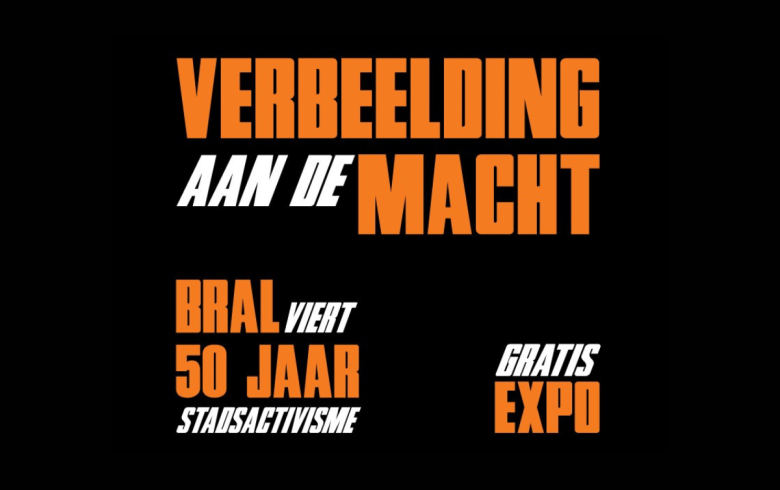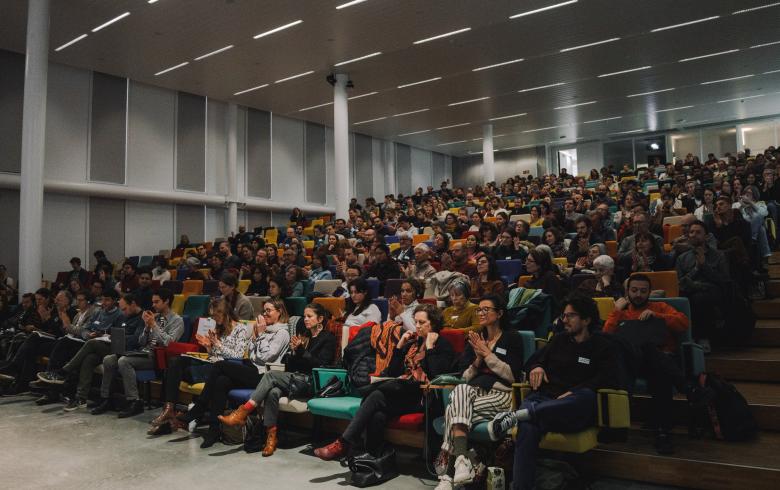
“Where does the rain go?” - Relive the conference
On March 6th 2023, Brussels became the European center of urban rainwater management for a short moment. London, Copenhagen, Paris and Brussels revealed their plans to avoid floods and sewage overflows. Every city clearly has its own approach, ambition and goal on the horizon.
Canal It up, BRAL and Brussels Environment are very happy that people were numerous to join us for the conference. Our wish is that the exchange of information will be beneficial for the natural environment. We hope that the information will live on after the conference, so don’t hesitate to view, review and share the different presentations.

London - The Super Sewer
Samantha Freelove is Legacy & Sustainability Manager at Thames Tideway Tunnel, the company responsible for the construction of the Super Sewer in London. The city is currently building a huge tunnel underneath the city to stop the sewage overflows to the Thames by 2025. The tunnel will be able to hold a volume of 1,6 million m³ of water during rain events to reduce the volume of sewage overflows by 95%. Today, London discharges the astronomical yearly volume of 110 million m³ of polluted water in the Thames. In 2025, this will be reduced to 5 million m³ per year. The enormous project with a price tag of 5 billion euro will safeguard the natural environment from pollution and will protect the health of the citizens who use the river for recreation.
Watch the video for London on YouTube: Samantha Freelove - The Super Sewer in London.

Copenhagen - Cloudburst Management Plan
“It was difficult, but it has been done”, with these words Lykke Leonardsen, Head Director Resilient and Sustainable City Solutions at the city of Copenhagen, describes how they developed the Cloudburst Management Plan together with all actors and citizens. It became an ambitious 1,6 billion plan for urban rainwater management and it was initiated after a huge flood in the city in 2011. 350 different projects throughout the whole city will protect the city against floods in the future. Several parks become rain parks, streets become rain streets and at the end of the line some tunnels will lead the water underneath the city center into the harbor. The beautiful part of the plan is that Copenhagen uses it as an opportunity to create new quality public spaces for the citizens on top of the extra green areas. The execution of the plan is well underway and will take up to 20 to 30 years.
Watch the video for Copenhagen on YouTube:Lykke Leonardsen - Cloudburst Management Plan - Copenhagen.

Paris - Swimming in the Seine by 2024
When Jacques Chirac was president of France, he promised that the Seine would be swimmable by the end of his term. He clearly wasn’t able to fulfill his promise, but Anita Ravlic from the city of Paris explains how the city will make this a reality by 2024. Today, 2 million m³ of polluted sewage water per year flows to the river through the sewage overflows. To reduce this to zero, they developed a plan with a price tag of 1,2 billion euro. Part of the plan is the construction of a stormwater basin underneath the Square Marie Curie with a volume of 50.000 m³, the last stormwater basin of the city. In 2024, several of the Olympic swimming disciplines will be organized in the river and in 2025 swimming in the river must be accessible for everybody. This comes on top of the already existing swimming infrastructure in the Villette Basin.
Watch the video of Paris on YouTube: Anita Ravlic - Swimming in the Seine by 2024 - Paris.

Brussels - Brussels Environment, Vivaqua and Hydria
Michael Antoine from Brussels Environment, Olivier Pireyn from Vivaqua and Boud Verbeiren from Hydria paint the Brussels water landscape, explain how they will adapt the existing overflow infrastructure and which study they are currently conducting to potentially use the Belliard stormwater basin in a dynamical way to reduce the sewage overflows. The questions asked by the public revealed a sorrow point of the Brussels plans, there is no calculated objective for a specific moment in time to reduce the 10 million m³ of sewage water discharged yearly in the Senne and the canal. Where the other cities have ambitious short-term plans, Brussels is looking at the problem at a much longer term and step by step.
Watch the video of Brussels on YouTube: Brussels Environment, Vivaqua and Hydria - Current and future projects
You can find more pictures of the event on https://www.canalitup.org/en/after-the-conference/.


